- PART 1
All this can lead to a complex build-up of pathological symptoms. If we would assume though that a somewhat intelligent human being can see that nutrition and environment directly affect his well-being and would do his utmost to take care of these areas in his life, we are still left with taking care of our mental-emotional well-being.
Is it possible to find a pattern or a red line indicating how your psychology and psychological stress affects the body? And what would that look like?
It seems like our troubles start on a heartfelt level. Literally! The heart is vital as an organ, pumping oxygen-rich blood throughout the system, but it has more functions than just that. Every mental-emotional state reflects and impacts on the heart and the heart area. An emotionally dysfunctional heart is a lonely heart.
The Heart and Psychological Stress
A vibrant, live, energized heart is compassionate and caring. Sorrow and grief are directly felt in the area but relate intrinsically to the lungs. The heart takes the first impact of any psychological stress or imbalance and from there passes it on to the respective organ that deals best with it.
It leads us to question firstly; what do we consider as imbalance – from a psychological point of view? And secondly what effect has it on the physical organ, the heart, and surrounding structures. In Chinese medicine, the meridian called the heart protector relates in western medicine to the pericardium – a connective tissue structure that surrounds the heart. The pericardium rests on the central tendon of the diaphragm, connects to the spine and ribcage, and on through the mediastinum to the lungs.
The thymus gland, a highly important gland of the immune system, rests on the upper portion of the heart. A continued mental-emotional imbalance would put a strain on the heart-protector, the pericardium, and impact the functioning of the heart. Continuous stress could thicken and tense up the pericardium and put a strain on the surrounding structures. It would affect the diaphragm and lungs. This is often felt as a weight on the chest and negatively affecting the immune system through the thymus.
Heart, Mind, Brain and Psychological Stress
Tension which builds up in the heart and the pericardium would also transfer to the spine and can displace one or several vertebrae in the mid-thoracic area. Any vertebrae that is out of alignment will have a knock-on effect on the whole spine but especially on the first and last vertebrae, lumbar five and cervical one (atlas), as they will try to compensate for tensions elsewhere. This would explain why headaches and lower-back problems are not just local phenomena!
I would even go as far as to say that anatomically our heart ought to be more to the center from where it is habitually – which is slightly towards the left. This, in turn, brings us back to our first question: what do we consider an imbalance? Leaving aside that we go through cycles of emotional upheaval – is our constant internal dialogue a normal state of mind just because it is a common affliction of mankind? And what are the repercussions of having a ‘monkey mind’ which appears to be predominantly left brain hemisphere orientated?
Can we from here connect psychology, brain functioning and the impact it has on the heart? From neuroscience research, it is clear that we do not have full conscious access to the whole capacity of our brain. It is only at certain times that we have ‘little’ breakthroughs and we feel that we have much more capacity than our general mode of functioning. It is also quite apparent that fear and the pain/pleasure reflex are ‘programs’ we seem to be running on for most of the time. Fear, control, setting boundaries, and the pain/pleasure reflex are attributes of the brain structures the medulla and pons, also referred to as the brain-stem and lies just within the skull.
Full Barin Capacity, Psychological Stress, and The Impacts
Could it be that we are wired in such a way that we bypass large chunks of functional brain tissue?
Instead, we dominantly connect from more primal brain structures. From the pons, medulla, midbrain, and thalamus to the left-hemisphere. Only reverting to the ‘more’ of us in times of crisis.
Somewhere along the line of our development, we must have deviated from a more integrated psychological and neurological functioning. What we can conclude, though, is that our current state is not sustainable. This is certainly apparent when we look at society.
Furthermore, a dysfunctional brain ‘hijacks’ the full expression of the heart and creates repercussions within the whole system.

Thanks for sharing your thoughts about psychological
stress. Regards
Welcome!
Its always healing me to read your articles I am from South Africa
Good to hear!